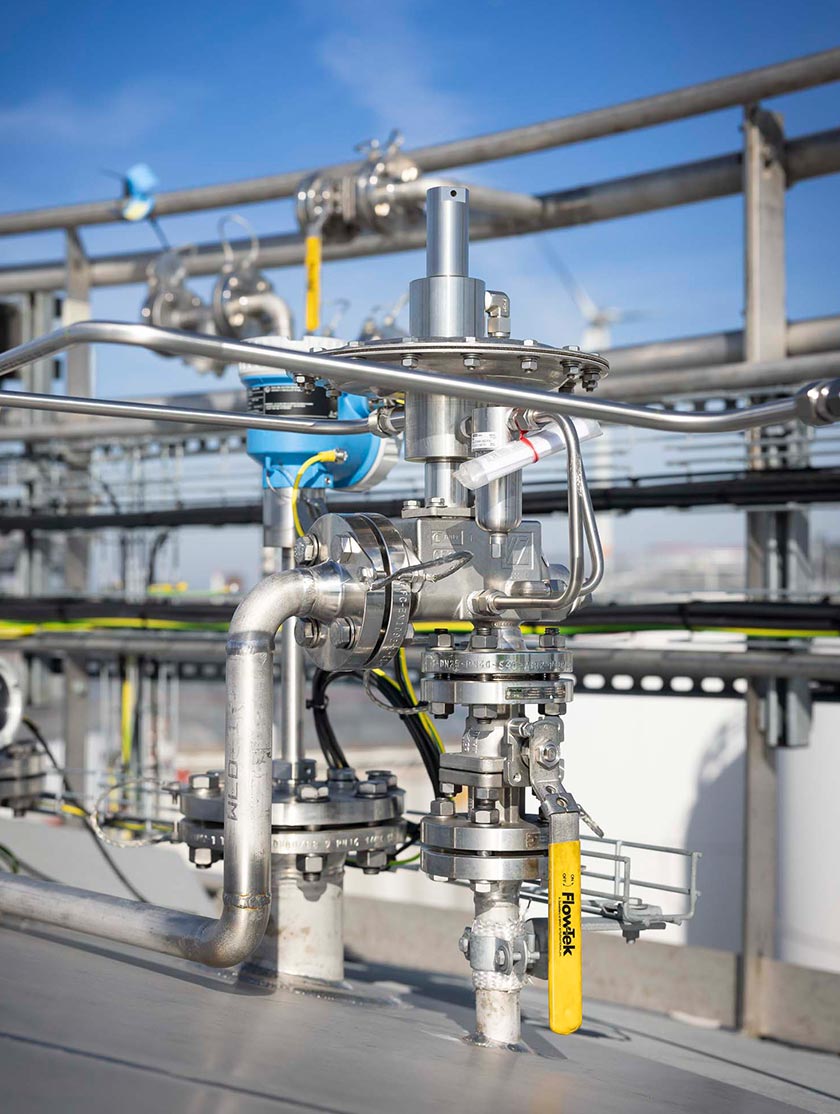Common Applications of Pressure Reducing Regulators Across Industries
Pressure regulators are essential components in many industrial systems where controlling and maintaining constant downstream pressure is critical. These devices automatically reduce a high inlet pressure to a lower, stable outlet pressure, ensuring operational reliability, efficiency, and equipment protection in various applications. Below, we examine the most common applications of pressure reducing regulators (also referred to as pressure regulators) in different industries.1. Oil and Gas Industry
In the oil and gas sector, pressure reducing regulators play an important role in regulating the pressure of gases and liquids in pipelines and processing plants. They are used to:
- Regulate the delivery pressure of natural gas to refineries or distribution networks, ensuring a stable flow rate and preventing pipeline damage due to excessive pressure.
- Regulate the pressure in gas lift systems to optimize hydrocarbon extraction.
- Provide constant pressure for measurement and control systems that require precise operating conditions.
2. Chemical and Petrochemical Industries
Chemical processing often involves handling reactive or hazardous fluids at varying pressures. Pressure reducing regulators help to:
- Maintain stable pressure in reactor feed lines to ensure reaction consistency and avoid dangerous pressure spikes.
- Ensure precise pressure control in gas feed systems for burners and purge operations.
- Protect downstream equipment such as valves, gauges, and filters from damage caused by high pressure.
3. Food and Beverage Industry
Pressure reducing regulators are essential in food and beverage manufacturing to maintain hygienic and safe process conditions. Applications include:
- Regulating compressed air or gas (e.g., CO₂ in carbonation) in packaging lines.
- Controlling steam pressure in cooking and sterilization processes to maintain strict hygiene standards.
- Ensuring the correct pressure in clean-in-place (CIP) systems for effective and damage-free cleaning of equipment.
4. Water Treatment and Distribution
Water treatment plants and municipal water supply systems require pressure reducing regulators to:
- Prevent damage to pipes and fittings by regulating the high pressure of incoming water from the main line.
- Maintain constant pressure in the downstream pressure line to optimize the performance of pumps, filters, and membranes.
- Protect sensitive components in disinfection and chemical dosing systems by providing stable operating pressures.
5. HVAC (Heating, Ventilation, and Air Conditioning)
Pressure reducing regulators are used in HVAC systems to:
- Regulate the pressure of steam or hot water supplied to heating coils and radiators.
- Regulate compressed air for pneumatic controls and instrumentation.
- Ensure safe and efficient operation of gas burners by stabilizing fuel gas pressure.
6. Pharmaceutical
The pharmaceutical industry requires precise process control to maintain product quality and comply with strict regulations. Pressure reducing regulators help to:
- Regulate gas pressure in cleanrooms and packaging lines;
- Ensure constant gas flow rates during synthesis and formulation;
- Protect sensitive analytical equipment with regulated gas or vapor pressure.
7. Manufacturing and Automation
In manufacturing plants, especially those with pneumatic tools and automated machinery:
- Pressure reducing regulators ensure the correct pressure for tools, improving performance and extending their life;
- They stabilize the pressure in compressed air systems that power actuators, conveyor belts, and robots;
- Provide controlled pressure during welding and cutting operations that require specific gas pressures.
Conclusion
Pressure reducing regulators are essential in many industries because they provide reliable control of the pressure, increasing equipment safety, efficiency, and longevity. By automatically adjusting high inlet pressures to specified outlet pressures, they ensure process stability and protect critical infrastructure in the oil and gas, chemical, food, water treatment, HVAC, pharmaceutical, and manufacturing industries. Understanding their applications helps industries optimize performance while minimizing risks and operating costs.
Need the Right Pressure Reducing Regulator? Get Expert Help Selecting the Ideal Regulator Engineered for Performance |
Cashco’s pressure reducing regulators are designed for precise pressure control across a wide range of industrial applications—delivering reliability, safety, and efficiency. For more information about Cashco's regulators, view all models here .
Cashco's priority is to make sure you select the right product for your application. Need help sizing your regulator? Complete our Regulator Sizing Form and our experienced team will gladly assist you in finding the ideal product!
Animated Guide: Pressure Reducing Regulator Function |
Discover the workings of a pressure reducing regulator in our animation video. Using the force-balance principle, this device reduces and maintains downstream pressure in a pipeline. Watch as we demonstrate how the regulator’s diaphragm and valve assembly create resistance to reduce upstream pressure. Learn how downstream flow demands impact the regulator, causing it to adjust and maintain a constant pressure.





